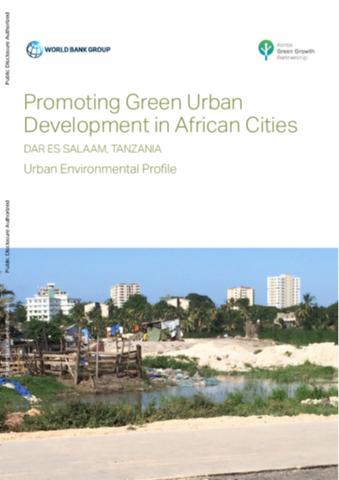The World Bank is a vital source of financial and technical assistance to developing countries around the world. We are not a bank in the ordinary sense but a unique partnership to reduce poverty and support development. The World Bank Group has two ambitious goals: End extreme poverty within a generation and boost shared prosperity.
- To end extreme poverty, the Bank's goal is to decrease the percentage of people living on less than $1.25 a day to no more than 3% by 2030.
- To promote shared prosperity, the goal is to promote income growth of the bottom 40% of the population in each country.
The World Bank Group comprises five institutions managed by their member countries.
The World Bank Group and Land: Working to protect the rights of existing land users and to help secure benefits for smallholder farmers
The World Bank (IBRD and IDA) interacts primarily with governments to increase agricultural productivity, strengthen land tenure policies and improve land governance. More than 90% of the World Bank’s agriculture portfolio focuses on the productivity and access to markets by small holder farmers. Ten percent of our projects focus on the governance of land tenure.
Similarly, investments by the International Finance Corporation (IFC), the World Bank Group’s private sector arm, including those in larger scale enterprises, overwhelmingly support smallholder farmers through improved access to finance, inputs and markets, and as direct suppliers. IFC invests in environmentally and socially sustainable private enterprises in all parts of the value chain (inputs such as irrigation and fertilizers, primary production, processing, transport and storage, traders, and risk management facilities including weather/crop insurance, warehouse financing, etc
For more information, visit the World Bank Group and land and food security (https://www.worldbank.org/en/topic/agriculture/brief/land-and-food-security1
Resources
Displaying 436 - 440 of 4907A Conceptual Framework for a Training Curriculum on Natural Disaster Risk Reduction and Management for Agriculture and the Rural Space
This paper presents the conceptual framework for a training program on
integrating disaster risk reduction and climate-change mitigation into
Agriculture and Rural Development Department (ARD) programming. Its
target audience consists of World Bank task team leaders and their national
counterparts and partners working in agriculture and rural settings.
Principles for Responsible Agricultural Investment that Respects Rights, Livelihoods, and Resources
These organizations have joined together to recommend the principles presented below. The document concludes with anticipated next steps, which point toward a toolkit of best practices, guidelines, governance frameworks, and possibly codes of practice by the major sets of private actors.
Earnings Growth and Employment Creation
The primary aim of this evaluation is to
develop lessons from the Bank’s experience in the three
selected countries of Columbia, Tunisia, and Turkey
regarding assistance aimed at employment creation and
earnings growth. The evaluation focuses on employment
creation and earnings growth because these have a strong
bearing on the extent to which the central objective of
poverty reduction is achieved. The evaluation assesses the
Monitoring of Glaciers, Climate, and Runoff in the Hindu Kush-Himalaya Mountains
Hydrometeorological monitoring, as
discussed here, describes the activities required to
characterize the properties and processes of the hydrosphere
as it exists in the three-dimensional mesoscale environment
of the high-mountain catchment basins of the Hindu
Kush-Himalaya (HKH) Mountains. Credible monitoring involves:
(a) functional institutions; (b) operational instruments;
(c) trained, motivated individuals; (d) scientific
Promoting Green Urban Development in African Cities
The city of Dar es Salaam, Tanzania has undergone a period of unprecedented urbanization that has contributed to the degradation of the city’s natural environment. With a growth rate above or near 5% for the past three decades, it is the fastest growing city in East Africa. The arrival of thousands of in-migrants year after year has overwhelmed the city’s ability to deliver adequate public services, housing and jobs. Unplanned, densely populated informal settlements that lack basic water, sewer, and waste services now cover much of the city’s land area.







